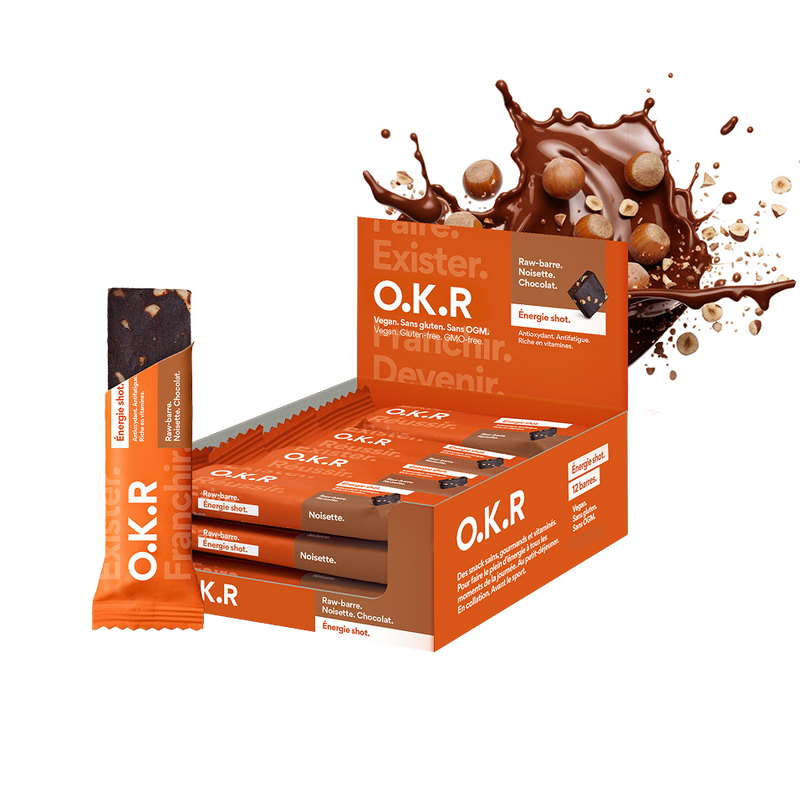Thermogenesis is defined as the consumption of energy to produce heat. It occurs in specific tissues, including brown adipose tissue. We've all experienced this thermogenesis process at some point: remember that day when you were extremely cold, and your body started shivering uncontrollably? In fact, it was your hypothalamus contracting your muscles to create heat.
Thermogenesis can result from several factors, such as environment, exercise, and nutrition. Today, many schools of thought associate it with weight loss, since it creates heat by burning calories. We'll decipher this phenomenon with you in this article.
What is the phenomenon of thermogenesis?
Thermogenesis is the process of the body creating heat. It is closely related to metabolism , as the body burns calories to produce heat. There are three types of thermogenesis that occur in the human body:
Exercise-associated thermogenesis - is the production of heat caused by intentional muscle movement for sports and exercise activities.
Non-exercise thermogenesis - energy expended on non-exercise activities such as standing, cooking, etc.
Diet-induced thermogenesis - this refers to the calories expended for the digestion, absorption, and storage of food.
Thermogenesis can therefore be influenced by diet, exercise, and the temperature of the external environment. It allows your body to adapt to changing activity and food levels, as well as to colder or warmer weather.
How can thermogenesis affect body weight?
Thermogenesis can influence weight loss. By burning calories, it can help you maintain a calorie deficit. Let's take a closer look at what can induce a state of thermogenesis...
#1. Exercise.
During exercise, your muscle cells burn calories to provide energy for muscle contraction. Although most of this energy production is used for this purpose, some energy is lost as heat. This process is why your body temperature rises during exercise and why you start to sweat. The more you exercise, the more energy will be produced as heat, and the more calories you burn, the more weight you will lose.
#2. Food.
Thermogenic substances are naturally present in many foods. Caffeine in coffee, catechins in tea, and capsaicins in chili peppers can promote weight loss by temporarily increasing thermogenesis in your body. A 2005 study published in the International Journal of Obesity reported that consuming these ingredients can increase your metabolism by 4% to 5% and help you burn fat by 10% to 16%.
#3. The environment.
Your body temperature is regulated by a part of the brain called the hypothalamus. This internal "thermostat" receives signals from receptors in your body that detect body temperature. When your body temperature begins to drop, your hypothalamus signals your muscles to contract. These muscle contractions, or shivers, help produce heat and warm your body.
How many calories do you burn with thermogenesis?
Initially, several factors determine your basal metabolic rate . Metabolism is the process by which your body converts what you eat and drink into energy.
- Your age: With age, your muscle mass tends to decrease and fat mass to increase, which reduces the number of calories burned.
- Your weight, height, and composition: People who are more muscular will naturally burn more calories.
- Your gender: Women tend to have more body fat than men of the same age and height, so men will naturally burn more calories.
Then it is thermogenesis that can influence your ability to burn calories.
- Exercise-Related Thermogenesis - Physical activity is by far the most variable factor that determines how many calories you burn each day.
- Non-exercise activity thermogenesis - represents approximately 100 to 800 calories consumed daily (walking from room to room, gardening, cooking, etc.)
- Diet-induced thermogenesis - The digestion, absorption, transport, and storage of the food you eat consumes calories. Approximately 10% of the calories you eat from the carbohydrates and proteins you consume are used during the digestion and absorption of food and nutrients.
Regularly consuming thermogenic foods can therefore boost your metabolism and promote weight loss. However, adding these foods to your diet won't be a miracle cure for melting fat. Spending time outdoors in cold temperatures in the hopes of losing weight is obviously not recommended, and more research is needed to evaluate how this can promote weight loss. A healthy diet and regular exercise remain the best ways to increase your metabolism and burn excess pounds. Find all our weight loss articles on this topic.













